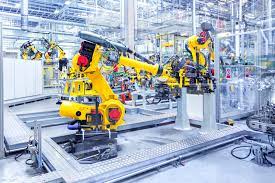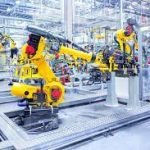In this article, we delve into the functionalities of our industrial automation department and other concepts related to Industry 4.0.
What does the industrial automation department do?
Its main task is to establish control over the machines through the application of different technologies. It is about designing “the brain” that starts an industrial process. In this case, we call it that because industrial automation is the part that controls the entire operating process of a machine. In addition, it provides operators with the ability to control a process in their factory simply through a screen (HMI, SCADA, Touch screen,etc.).
What are the benefits of industrial automation?
Here are some of the most notable benefits of having a fully automated installation:
- Savings in working time
- Elimination of repetitive tasks
- Process simplification
- Increased security
- Elimination of human error
- Streamline the production process
- Anticipation of production failures
This last point is perhaps one of the most important. Industrial automation systems provide a history of alarms that allow detecting possible errors or failures. For example, an engine overheating error. This alarm history can be consulted, at any time, and find where the error is to solve it. This point allows companies to anticipate possible errors in production.
Below we can see an example of an alarm history that an operator can consult.
Industrial automation and Industry 4.0
As stated in the 4.0 Guide, Industry 4.0 or Connected Industry allows companies to “react more agilely” while “reducing product development times” thanks to the “interconnections of technological components”.
It is obvious that industrial automation is linked to Industry 4.0, because in practically all stages of the production process an automatic control of its critical variables can be carried out. Relating this point to the example previously explained, industrial automation allows real-time information on the production chain on the mobile phone, receiving notifications of the stoppage of a process, receiving alerts of machinery failures, etc. In short, it is not necessary to be on site to know the status of production.
Example of a real automated installation
Below we describe the process of shipping a product through our automated pneumatic conveying solution.
Loading process
- The operator starts the process from the screen.
- The hopper is loaded with the product to be transported.
- At the same time, a system is put into operation to capture the dust that is released during charging.
- The operator selects the end of the load.
- System cleaning is triggered.
Shipping process
- The operator selects the value to send.
- The vacuum pumps are actuated. The operator waits one minute until the suction of the pumps is steady.
- The material in the hopper, thanks to the work of other systems, falls and the suction capacity carried it to its destination.
Get to know some indispensable machinery for the pharmaceutical industry






